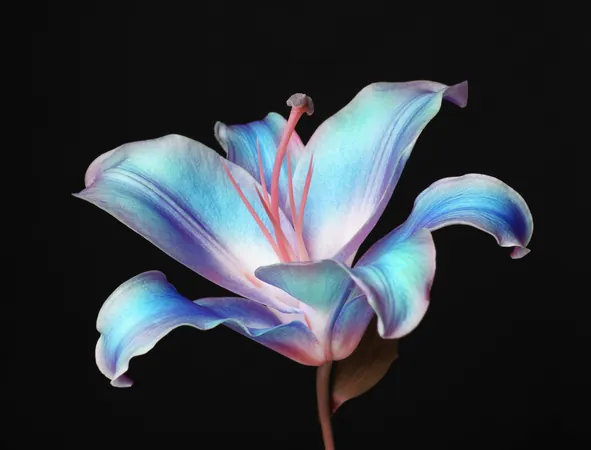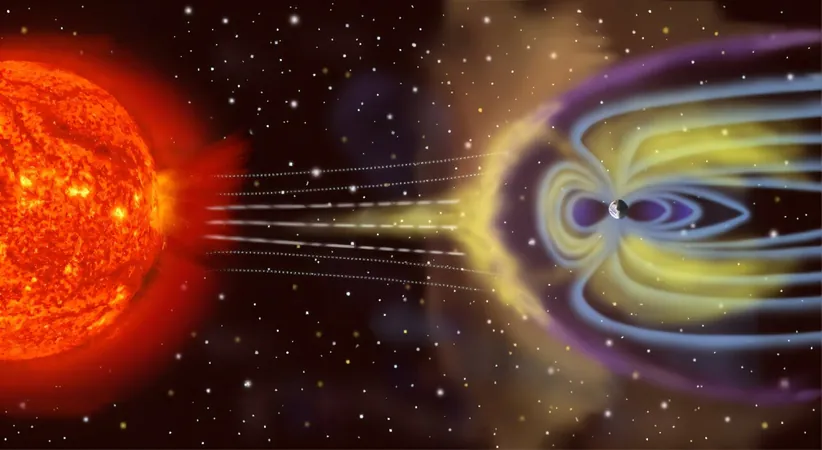
The Hidden Light of Life: Unveiling the Mysteries of Ultraweak Photon Emission
2025-05-18
Author: Emma
The Invisible Glow of Life
Imagine a world where life shines brighter than we can see. While we revel in visible light from campfires or the sun, living organisms emit a far subtler glow known as ultraweak photon emission (UPE). This nearly imperceptible flicker, a side effect of metabolic processes, isn’t visible to the naked eye but exists in every living being.
New Research Sheds Light on UPE
Researchers at the University of Calgary recently embarked on a fascinating investigation into UPE, uncovering its potential biological significance. Unlike the flashy bioluminescence seen in fireflies, UPE emits light so feeble that it can only be detected with specialized equipment, spanning a spectral range of 200-1,000 nanometers.
Sign of Life or Death?
In an intriguing experiment with mice, scientists discovered that the intensity of UPE could separate the living from the recently deceased. Using high-sensitivity imaging tools, they captured the vibrancy of living mice against the near-darkness of their deceased counterparts—a stark contrast that unveils a hidden narrative of vitality.
Plants and Their Secret Language of Light
Plants don't just photosynthesize; they also communicate through light. In another part of the study, researchers subjected plant tissues to various stressors, revealing that regions under duress glowed more brightly. This illumination correlates with cellular alarm signals prompted by injury or chemical exposure.
The Dance of Cells and Light
Life is akin to an elaborate chemical orchestra where cells perform countless reactions, some creating reactive oxygen species (ROS). During times of stress, ROS levels increase, leading to a cascade of events that cause UPE—tiny bursts of light that our eyes miss but hint at deeper biological rhythms.
Revealing the Invisible: The Technology Behind UPE Detection
Capturing this invisible glow isn't easy. Researchers relied on advanced imaging technology, including Electron-Multiplying Charge-Coupled Device (EMCCD) and Charge-Coupled Device (CCD) cameras, to eliminate ambient light interference. Their findings revealed that while the light disappeared in deceased mice, plant tissues responded dynamically to injury and stress.
A Promising Diagnostic Tool?
Could UPE become a game-changer in medical diagnostics? The research opens intriguing possibilities. By monitoring UPE, doctors might detect disease or cellular stress long before physical symptoms emerge. This capability could revolutionize how we understand health and illness.
Exploring the Unknowns of UPE
While this study highlights the potential of UPE, it also raises pertinent questions. What determines the variability of light emissions in stressed cells? How does metabolism influence these emissions? The answers may lead to groundbreaking insights in biology and medicine.
A Glimmer of Hope in Darkness
The work from the University of Calgary invites us to reconsider the essence of life itself. UPE, a silent yet promising indicator of biological activity, continues to elude comprehensive understanding. As researchers dive deeper into the world of invisible light, they inch closer to unraveling the complex interplay between life and light, potentially redefining our perception of vitality.
Stay Updated with the Latest Discoveries!
If you found this revelation about the silent glimmers of life captivating, be sure to subscribe for more thrilling insights into the natural world and all its mysteries!









 Brasil (PT)
Brasil (PT)
 Canada (EN)
Canada (EN)
 Chile (ES)
Chile (ES)
 Česko (CS)
Česko (CS)
 대한민국 (KO)
대한민국 (KO)
 España (ES)
España (ES)
 France (FR)
France (FR)
 Hong Kong (EN)
Hong Kong (EN)
 Italia (IT)
Italia (IT)
 日本 (JA)
日本 (JA)
 Magyarország (HU)
Magyarország (HU)
 Norge (NO)
Norge (NO)
 Polska (PL)
Polska (PL)
 Schweiz (DE)
Schweiz (DE)
 Singapore (EN)
Singapore (EN)
 Sverige (SV)
Sverige (SV)
 Suomi (FI)
Suomi (FI)
 Türkiye (TR)
Türkiye (TR)
 الإمارات العربية المتحدة (AR)
الإمارات العربية المتحدة (AR)